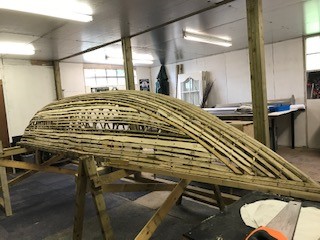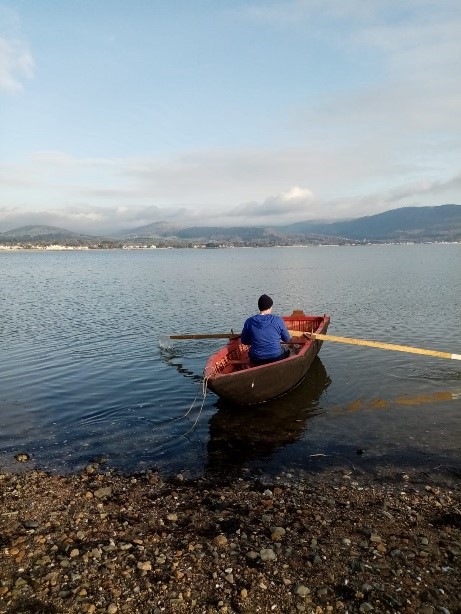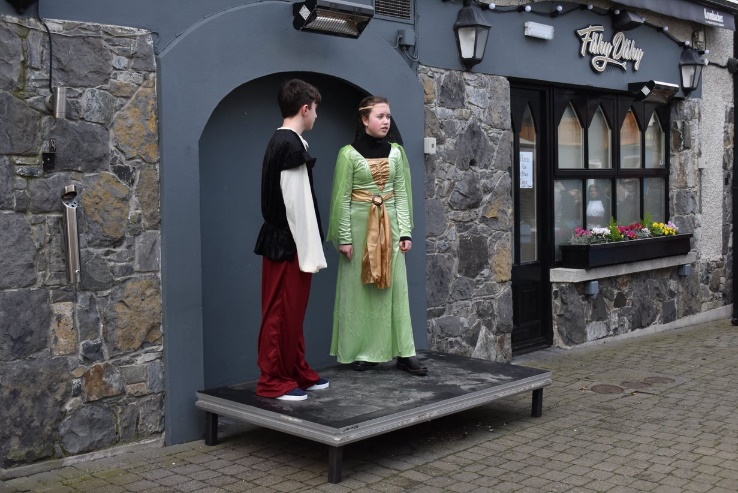by Séamus Murphy
For some unknown reason the notion seems to have taken hold over the decades that Irish people were reluctant to eat fish during the Famine. This is complete nonsense: the starving people ate all the fish they could get their hands on, anything else that was edible and quite a lot that wasn’t. There is some evidence that the death rate was lower close to the coastline where seafood was available, and there are plenty of testimonials of people scouring rocks on the shores for whelks and any other kind of shellfish or edible seaweed.
But there is a very good reason why the fish catch was restricted in the mid-1840s. On 6th January 1839 a full-scale hurricane had hit Ireland, destroying nearly a quarter of all the houses in the country, blowing sheep out to sea and herrings forty miles inland. We don’t know how many of the small craft around the coast were destroyed on the Night of the Big Wind, but it was probably a massive proportion. Nor do we know for certain whether there were currachs on Carlingford Louth. We do know that herring fishing was massive here; in 1835 there were 232 fishermen in Omeath alone and a couple of hundred small craft on the Lough. It is very likely that some were currachs, which are relatively cheap and easy to build with some simple woodworking skills.
In 2017 Neville McCann in Cornamucklagh decided to put this theory to the test. Neville knows a thing or two about woodwork – he had recently changed career from picture framer to making harps of concert quality. However, he didn’t actually know how to build a currach so he did what any sensible person would do and Googled it until he came up with some kind of blueprint.
Then we went down to the Ferry Wood at Narrowwater to look for thin, flexible hazel rods and sliced them in two with a bandsaw. Neville built a steambox out of waste plywood and used an old paint tub as a kettle. The steam was needed to help bend the wood for the prow and topboard of the frame. Then he began the long, slow process of drilling the frame to take a series of crosswise hazel half-hoops and securing long, very thin strips of hazel lengthwise to the hoops with copper nails.
A suitable piece of canvass-type material was secured in the form of an old sail. Chunks of old bitumen left behind by a roofer were melted on a bonfire and painted on inside and out, followed by a layer of red paint inside to give it a distinctive look. Seats and rowlocks were installed and classic bladeless oars added.
The next problem was that nobody actually knew how to sail a currach. On first launch it tended to spin around and various experiments were made with ballast in the form of old coalbags half-filled with sand. But help was available in the shape of the currach club in Warrenpoint, which almost caused an international incident by rowing across to Omeath without the the permission of the harbour master. Eventually nine currachs, some manned by Irish-speaking crews, mustered for a race from Greer’s Quay to Omeath Pier and at one point we even had a Boyne coracle – the circular version of the currach used on rivers – joining in the fun.
So after a gap of more than a century and a half the currach has firmly re-established itself on Carlingford Lough. Currach lovers even have their own local WhatsApp group -Ciorcal Currach – with great photos and videos of these very special boats in action on the Lough.

















